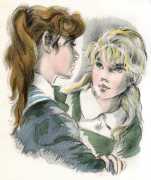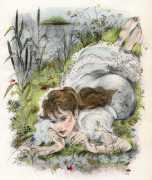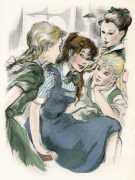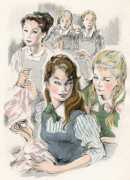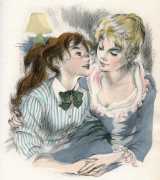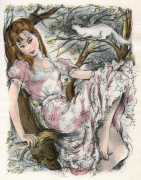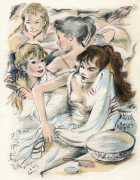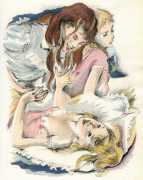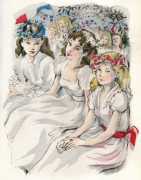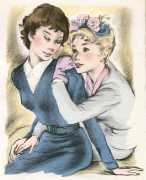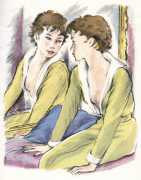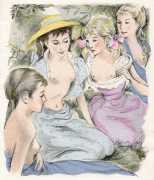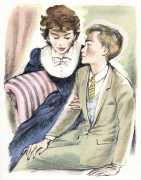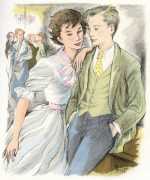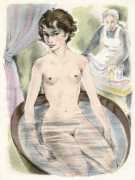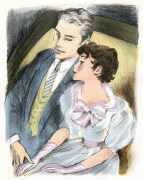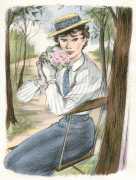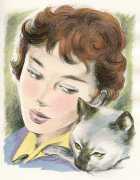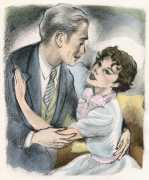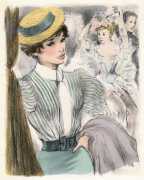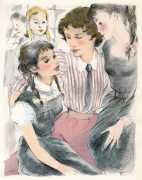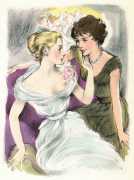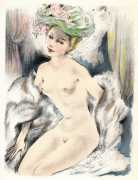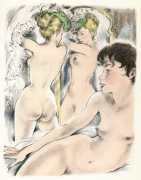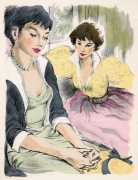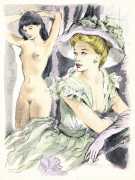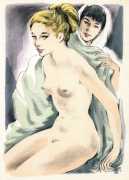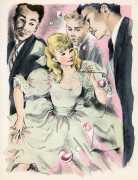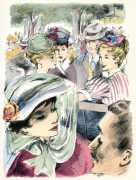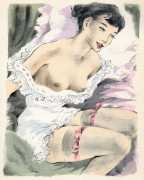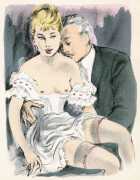Colette, whose full name was Sidonie-Gabrielle Colette (1873–1954), was a remarkable woman, and you can read more about here in the entry for her Nudité portfolio which you will find here.
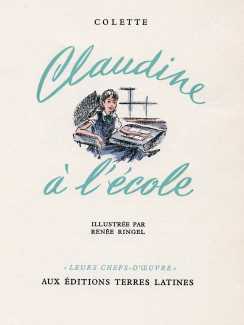 The Claudine series of four semi-autobiographical novels revolving round the central character of Claudine herself, which Terres Latines added to their Leurs Chefs d’Œuvre (Their Masterpieces) series in 1950, consists of four early novels by Colette and her first husband Henry Gauthier-Villars, better known by his pen name Willy. There has been much speculation over the degree of the collaboration between Colette and Willy in the writing of the Claudine novels, particularly as Willy was known for often using ghostwriters, and was known for regularly belittling his wife’s skills and involvement. Consequently, although the novels were originally attributed to Willy and published under his name alone, they were later published under both names. After Willy’s death, Colette went to court to challenge her former husband’s involvement in any of the writing, and subsequently had his name removed from the books. This decision was overturned after her death, as Willy’s son from a prior relationship, Jacques Gauthier-Villars, successfully sued to have his father’s name restored. Colette had the last word, however, and by mid-century the Claudine books became firmly Colette-only.
The Claudine series of four semi-autobiographical novels revolving round the central character of Claudine herself, which Terres Latines added to their Leurs Chefs d’Œuvre (Their Masterpieces) series in 1950, consists of four early novels by Colette and her first husband Henry Gauthier-Villars, better known by his pen name Willy. There has been much speculation over the degree of the collaboration between Colette and Willy in the writing of the Claudine novels, particularly as Willy was known for often using ghostwriters, and was known for regularly belittling his wife’s skills and involvement. Consequently, although the novels were originally attributed to Willy and published under his name alone, they were later published under both names. After Willy’s death, Colette went to court to challenge her former husband’s involvement in any of the writing, and subsequently had his name removed from the books. This decision was overturned after her death, as Willy’s son from a prior relationship, Jacques Gauthier-Villars, successfully sued to have his father’s name restored. Colette had the last word, however, and by mid-century the Claudine books became firmly Colette-only.
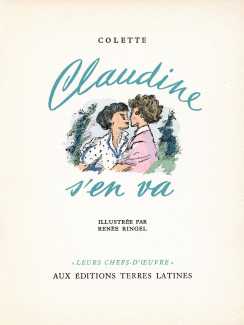 Written in the 1890s, the novels were published between 1900 and 1903. In diary form, they describe the growth to maturity of the young Claudine. Just fifteen at the beginning of the first book, Claudine à l’école (Claudine at School), the series describes her education and experiences as she grows up. All the books are written in the first person, the first three having Claudine herself as the narrator. The last in the series, Claudine s’en va (Claudine Leaves, usually translated as Claudine and Annie), introduces a new narrator, Annie.
Written in the 1890s, the novels were published between 1900 and 1903. In diary form, they describe the growth to maturity of the young Claudine. Just fifteen at the beginning of the first book, Claudine à l’école (Claudine at School), the series describes her education and experiences as she grows up. All the books are written in the first person, the first three having Claudine herself as the narrator. The last in the series, Claudine s’en va (Claudine Leaves, usually translated as Claudine and Annie), introduces a new narrator, Annie.
The titles and publication dates of the four novels are
Claudine à l’école (Claudine at School), 1900
Claudine à Paris (Claudine in Paris), 1901
Claudine en ménage (Claudine Married), 1902
Claudine s’en va (Claudine and Annie), 1903
Renée Ringel was commissioned by Terres Latines to produce twelve plates for each of the four Claudine books, and succeeded in capturing the spirit of the novels, with just enough naked female flesh to help the edition stand out from the many text-only versions available by the 1950s.
Each of the Claudine novels was published in a limited numbered edition of 1,800 copies, though all the copies we have seen are actually unnumbered.
The best English translation of Colette’s Claudine books is the single-volume The Complete Claudine, published by Farrar, Straus and Giroux, translated by Antonia White and with an excellent introduction by Judith Thurman.


